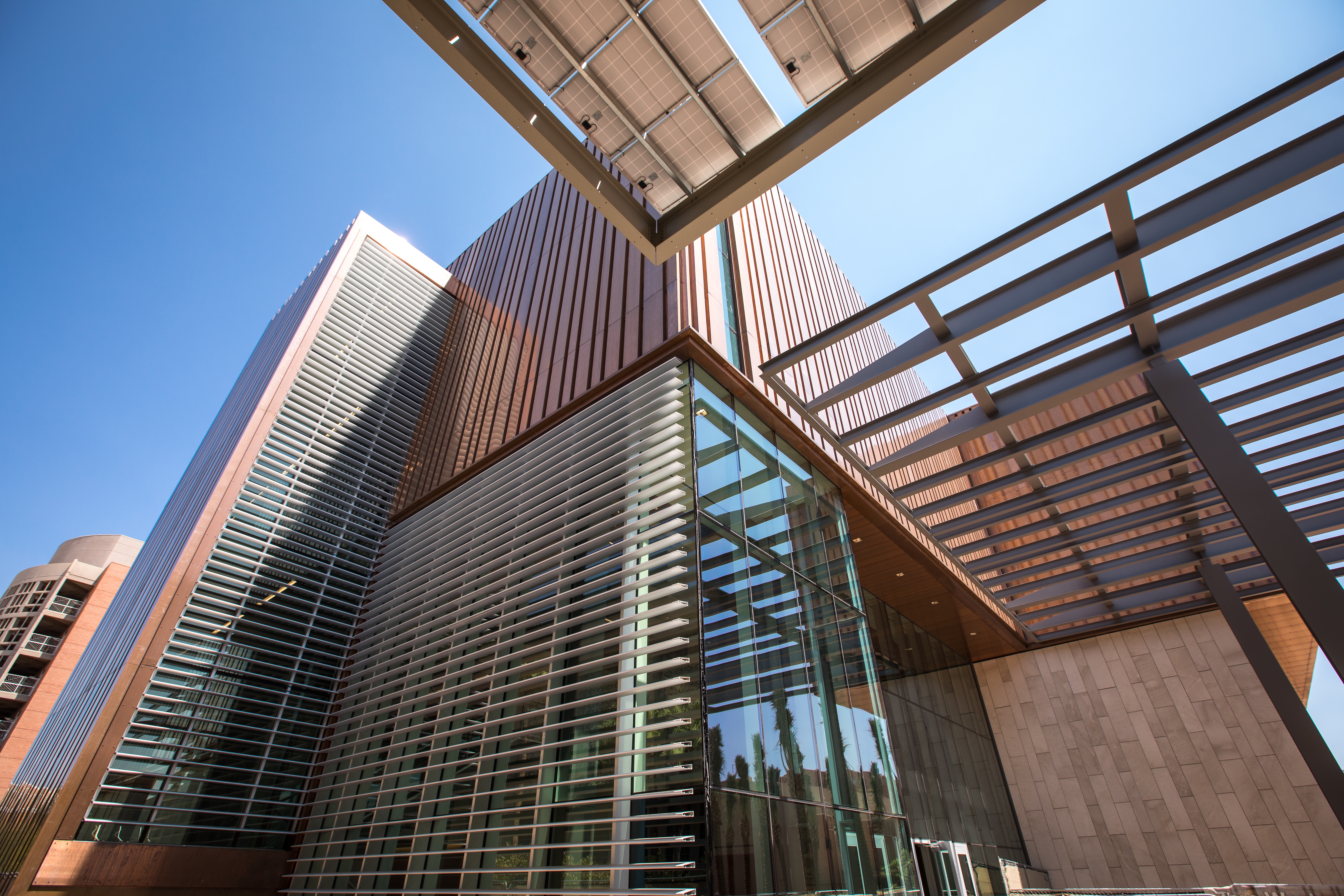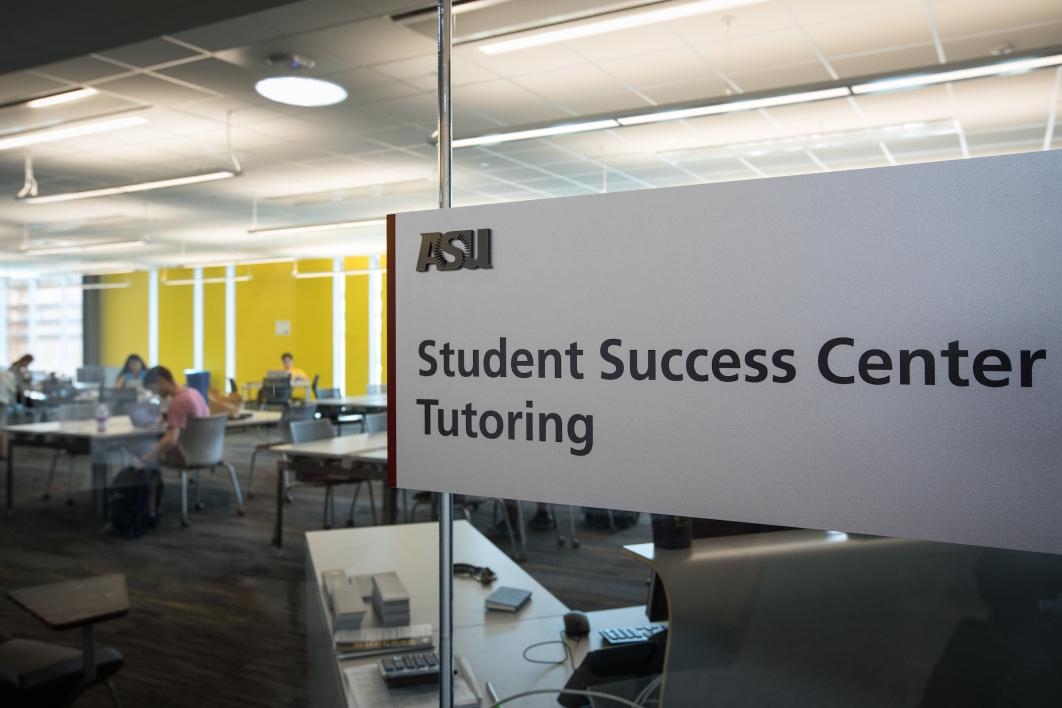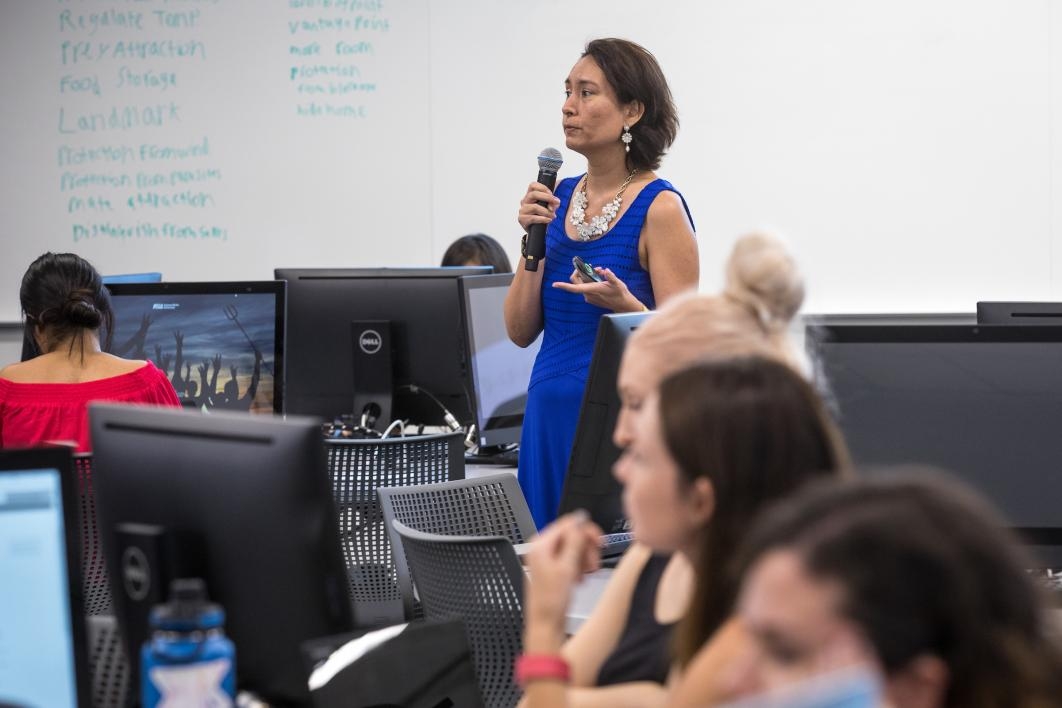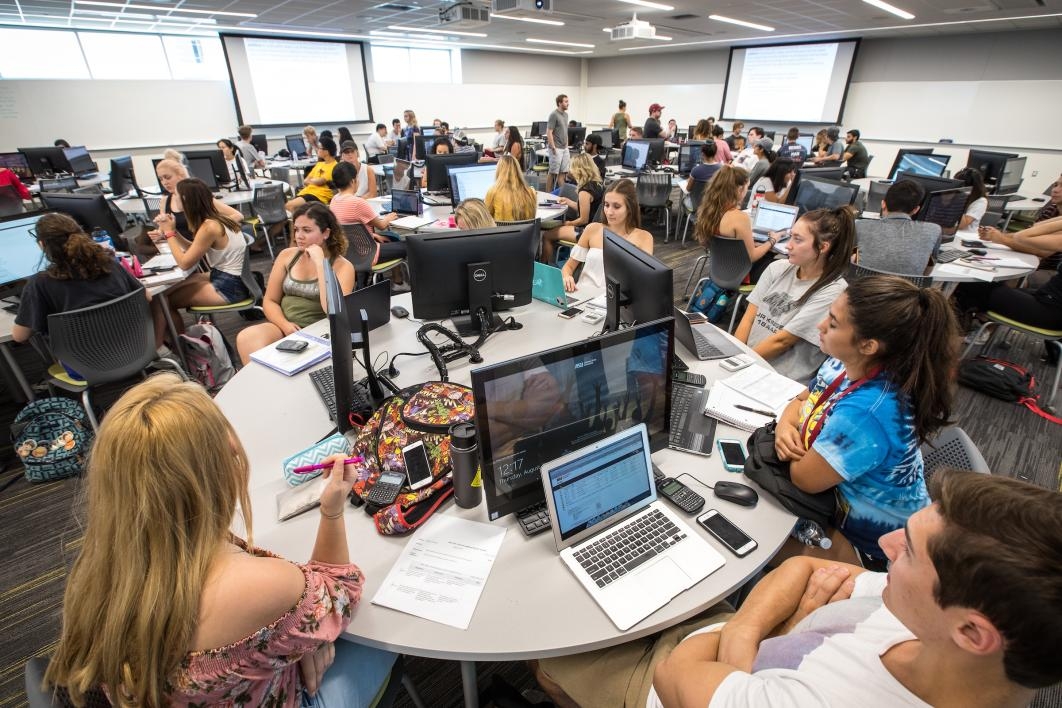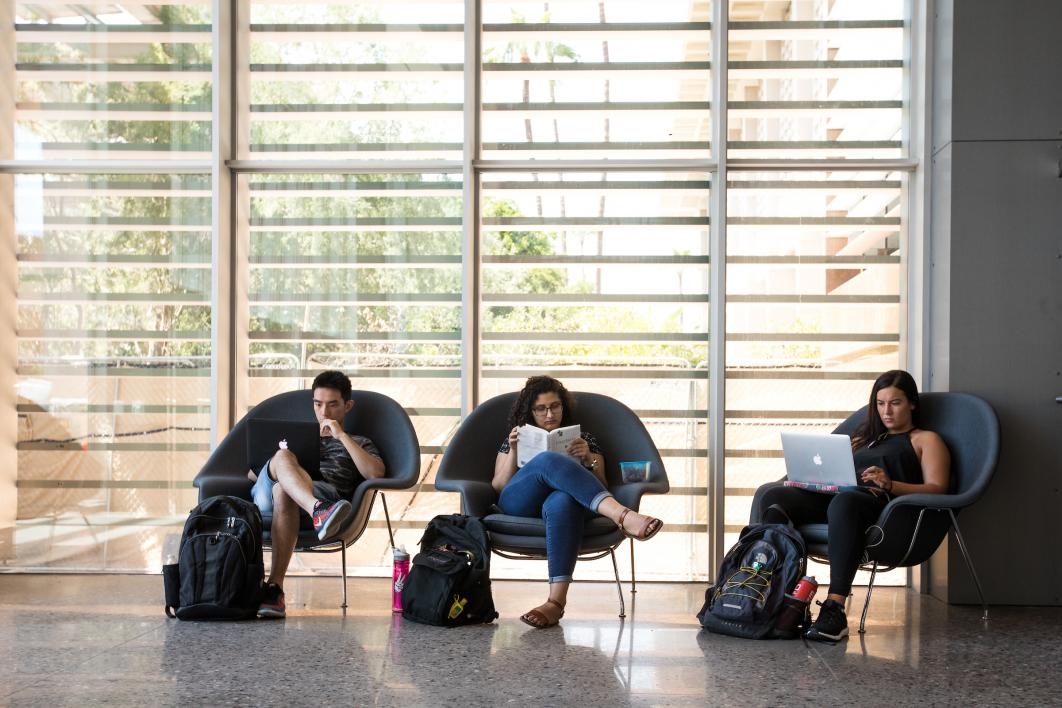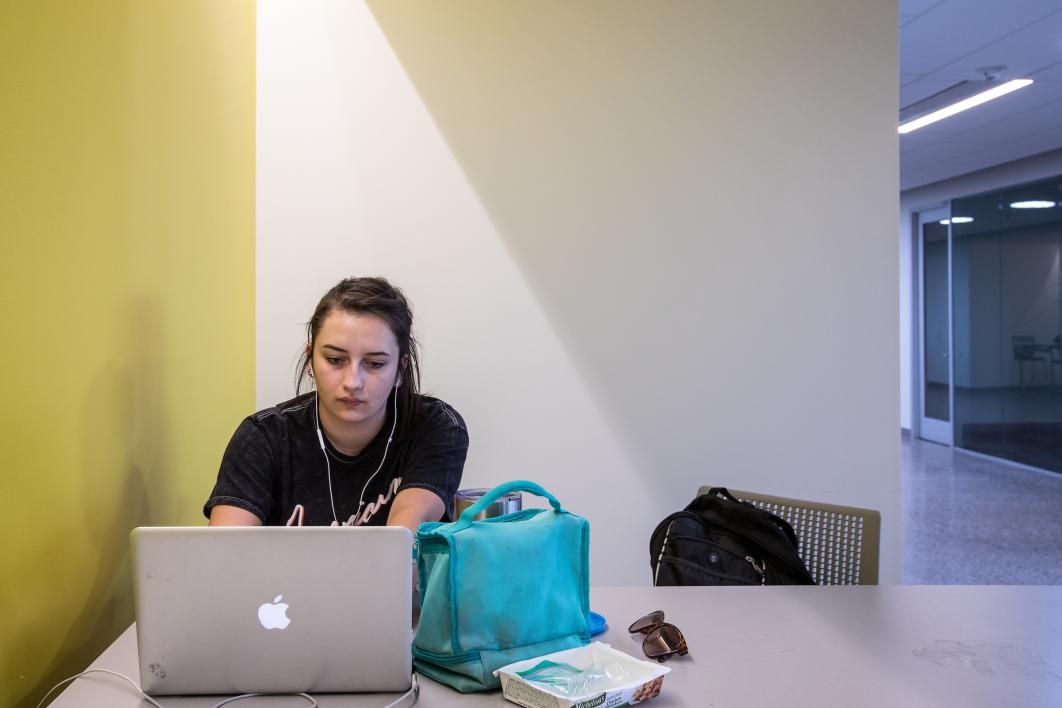New ASU building serves as a central hub to student community
Student Pavilion provides space for student groups, classrooms and studying — all while aiming to be a Net Zero Energy building
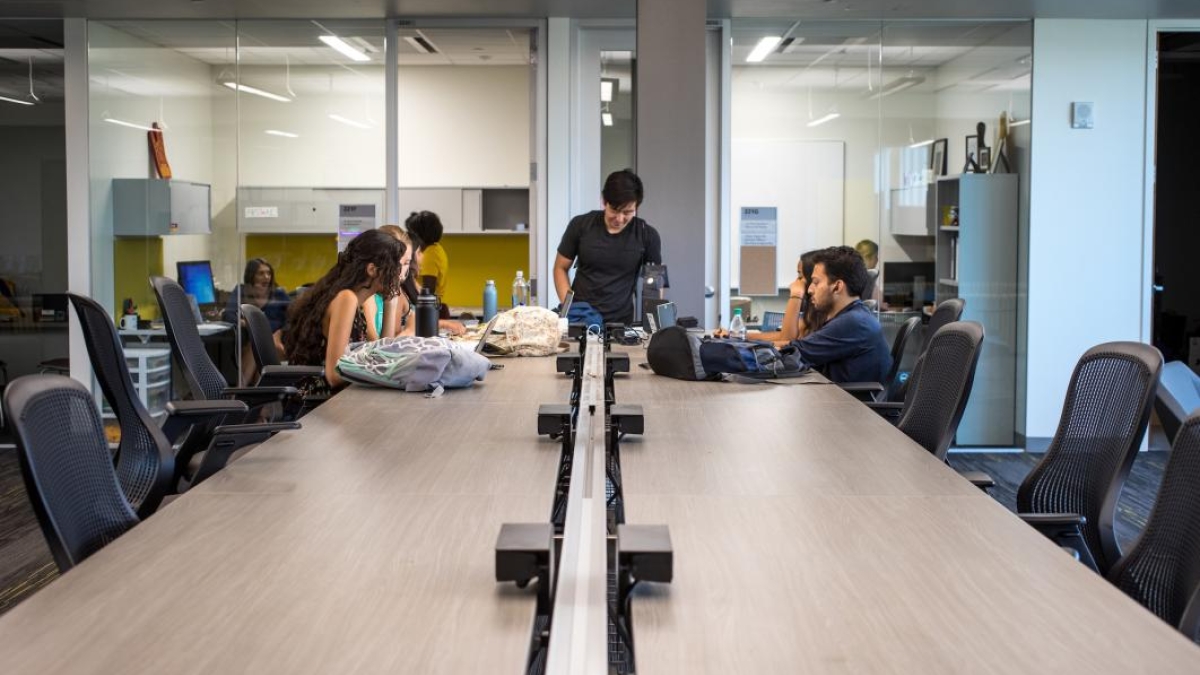
Editor's note: This story is being highlighted in ASU Now's year in review. To read more top stories from 2017, click here.
Sitting in the heart of Arizona State University’s Tempe campus, one of the school’s newest buildings is impossible to miss. The 74,653-square-foot structure jumps out of the ground and reaches toward the sky, catching the eye with its glass windows and copper panels.
ASU's Student Pavilion is located at the center of student activity and student traffic, and plans are for it to host a variety of shows, productions and guest lecturers, in addition to providing classroom and office space.
“With a new building comes new excitement and interest from the student body,” said Brittany Benedict, president of the Undergraduate Student Government (USG) on the Tempe campus. “We’re hoping that the new traction will have students checking out our space and, in turn, have an interest as to how our organizations can benefit them.”
The USG isn’t the only organization calling the new pavilion home.
ASU's Council of Coalitions and the Programming and Activities Board have moved into the second floor of the building, making good use of the pavilion’s modern office space. And according to Benedict, the design of the building is impressing everyone so far.
“We are working in a naturally lit area since the building is essentially all windows,” said Benedict, an undergraduate student in the W. P. Carey School of Business. “That’s definitely had a positive impact on work being done in our building.”
The building is powered by the PowerParasol photovoltaic array, located between the pavilion and the Memorial Union. The roof of the pavilion is also solar-ready for future photovoltaic installations as the building looks to minimize the amount of energy it uses going forward.
As part of the goal for the pavilion to be a “Net Zero EnergyThis means the total amount of energy used by the building on an annual basis is roughly equal to the amount of renewable energy created on the site.” building, ASU is incorporating plenty of energy-saving techniques. This includes process load metering, exterior shading of windows, high levels of building envelope insulation and a low window-to-wall ratio.
“All of the sustainable practices that have been implemented are what excites me the most,” Benedict said. “It’s a (Net Zero) facility, which means that it’s not using any more energy than what the building itself is producing.”
The pavilion is operated in similar fashion to the university's Memorial Union, which is just a few steps away.
"It's staffed by students, including building managers and event assistants," said Jeffrey Rensel, who oversees the management and usage of the building. "These staff members open and secure the building and provide general daily operational support to the facility."
Even though the pavilion has been open for only a couple of weeks, it has already become a popular study spot for many students.
A wide common area just beyond the main entrance and a third-floor tutoring and supplemental instruction service offer plenty of space and opportunities to further academic success in the new building.
“There is lots of room and outlets everywhere, which really helps,” said Zachary Verlander, a chemistry senior in the College of Liberal Arts and Sciences. “It’s a great place to study and do homework.”
JE Dunn Construction broke ground on the new building in March 2016 and served as the construction team for the Student Pavilion. Those wanting to view the building in its present state can do so here via live webcam.
Top photo: The new Student Pavilion on the Tempe campus. The structure provides students with two new classrooms, plenty of study and social spaces and offices for student groups. Photo by Charlie Leight/ASU Now
More Environment and sustainability

How can cities go green to beat the heat?
As people across the United States turn up their air conditioners to combat rising summer temperatures, researchers are investigating ways to sustainably and effectively cool down entire cities.…

ASU sustainability students tackle hotel food waste
Graduating seniors from the School of Sustainability, a unit of the College of Global Futures at Arizona State University, showcased their innovative solutions for real-world sustainability…

Engineering low-carbon building materials
Cement is the strong and versatile binder that holds together sand and aggregates in concrete used to erect the sturdy structures that have long shaped our modern built environments. Cement is also…
